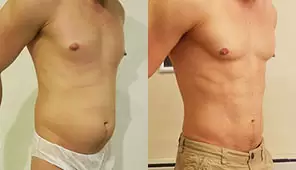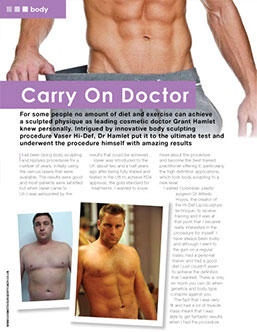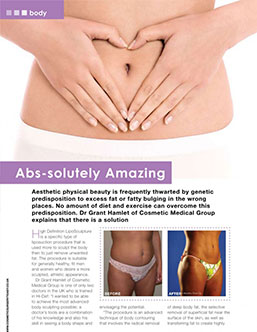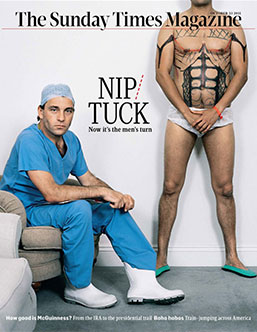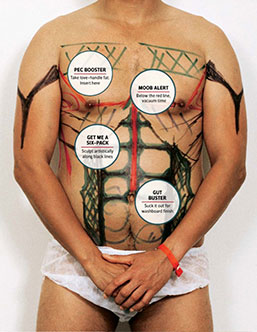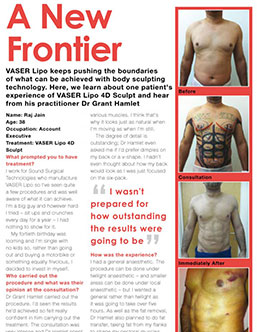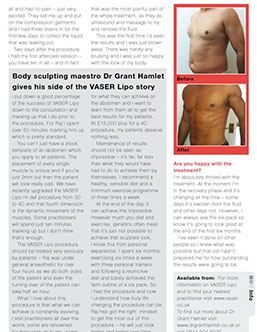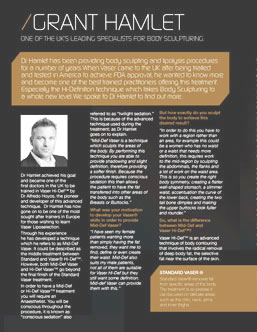
Liposuction is the best way to rid yourself of stubborn excess fat. It is a cosmetic surgery that can remove pockets of fat from the areas of your body you want it least. If you’ve tried everything and you just can’t slim down the way you want to, liposuction offers an immediate solution.
The private practice of Dr. Grant Hamlet offers first-class liposuction treatment in London. For more information, call 0207 127 4377 or fill out this form.
Table of Contents
ToggleAbout Liposuction
Liposuction is the most common cosmetic surgery in the Western world. (1) The surgery involves the use of suction in order to remove fat. A surgeon uses a specially-made suction tool called a cannula for this. Liposuction techniques often include processes that break down and prepare the excess fat for removal. The surgery also involves shaping what remains after the excess fat has been removed. This is called contouring, and it ensures that your body will look natural once it is rid of unwanted fat deposits.
There are a few different types of liposuction. These include:
Tumescent Liposuction
Tumescent liposuction is the most common type of liposuction. A surgeon injects a saline solution with lidocaine and epinephrine into the areas of fat that will be removed. Lidocaine is used to prevent discomfort, and epinephrine is used to constrict the blood vessels and reduce bleeding. Together with a high volume of saline fluid, these additives make for a safer and easier procedure. Tumescent liposuction doesn’t require general anaesthesia, and it reduces the side-effects that fat removal can have on blood pressure and other health factors.
Super-Wet Liposuction
Super-wet liposuction is similar to tumescent liposuction, although it requires less fluid. This makes for a quicker procedure, though it is less effective at reducing discomfort.
MicroAire-assisted Liposuction
MicroAire liposuction is a type of power-assisted liposuction (PAL). It utilises specialised instruments that vibrate at a high frequency, gently breaking down fat cells while minimising trauma to surrounding tissues. This technique ensures a more comfortable experience for the patient and reduces postoperative swelling and bruising.
One of the key advantages of PAL is its minimally invasive nature. The procedure can be performed under local anaesthesia, eliminating the need for general anaesthesia and its associated risks. This means a faster recovery time and less downtime for patients.
Ultrasound-assisted Liposuction
Also known as “ultrasonic liposuction” or UAL, this technique involves the use of ultrasonic vibration. A surgeon applies ultrasonic vibration to fat cells in order to liquify them. This makes it easier to remove fat from fibrous areas of the body, like the lower back. This technique can be used alongside tumescent liposuction. VASER Liposuction is a popular and highly effective example of the ultrasonic technique, with VASER Hi-Def being the ultimate body-sculpting technique.
Read more about the advantages of VASER Liposuction on our blog.
Laser-assisted Liposuction
Laser-assisted liposuction utilises laser energy on fat cells in order to liquify them. The laser energy liquifies fat cells so thoroughly that they require little to no suction in order to be removed from the body. The tubes that are used to remove the fat are smaller, making this a great liposuction technique for smaller areas of the body like the face and neck.
Benefits of Liposuction
Liposuction can make you feel comfortable in your body. When you try everything to have a more toned physique, pesky pockets of fat that just won’t disappear can be demoralising. The effects that unwanted fat can have on self-esteem are no joke. With liposuction, you can finally feel great about the way you look.
You can receive liposuction treatment on just about any part of your body. Common areas for liposuction treatment include:
- Abdomen
- Flanks
- Chest
- Back
- Face
- Buttocks
- Thighs
- Upper Arms
With the help of liposuction treatment, you can finally get rid of that mound on your tummy, or that extra tissue on the back of your arm. Liposuction is not an entirely cosmetic technique, either. It can be used to treat lipomas, lipedema, and lipodystrophy. It can aid in the reconstruction of the body, addressing the excess tissue and physical abnormalities that these conditions cause. (2)
Who is a Candidate for Liposuction?
Liposuction is a life-changing solution for those afflicted with excess fat. Sometimes, no matter how hard you seem to try and lose weight, there are pockets of fat in your body that just won’t disappear. If you are stuck with fat that you can’t do anything to get rid of, liposuction might be right for you. However, it should be noted that liposuction is not a weight-loss solution but a body contouring technique.
If you have questions about whether or not liposuction is the best choice for your needs, schedule a personal consultation today!
Personal Consultation
At your personal consultation, we will provide you with everything you need to know about liposuction. We will assess your medical history and your current medications to determine if liposuction is a good fit. With your goals in mind, we will examine the condition of your body and determine the treatment that is best for you.
At Dr. Hamlet’s practice, we take the goals of our patients seriously. We pride ourselves on taking the greatest care to help our patients achieve their cosmetic goals. To schedule your personal consultation, call (0207 127 4377 or contact us online.
Preparation
In order to prepare you for your surgery, we may ask that you start or stop taking certain medications. If you smoke, you should stop before your surgery. Smoking can harm your body’s ability to heal and recover. We also recommend that you avoid anti-inflammatory drugs like aspirin, to reduce bleeding.
You will be given specific instructions based on the type of liposuction you will be receiving and which parts of your body are being treated. It is important that you follow these instructions closely to ensure that you have a safe and successful surgery.
Liposuction Procedure
Your liposuction procedure will begin when your surgeon administers intravenous sedation, local or general anaesthesia. Your surgeon will have predetermined which of these options is right for you. If your procedure involves injections or targeted applications like ultrasonic waves, your surgeon will do this next. Once your fat is appropriately prepared, your surgeon will make a small incision near the area of treatment. Through this incision, your surgeon will loosen and remove the excess fat using a cannula. Once your surgeon has reshaped the remaining fat to optimise natural contouring, they will close your incisions and the procedure will be over.
Recovery
As you recover from your liposuction procedure, you should expect some swelling, bruising and discomfort. Your provider may prescribe medication to reduce discomfort. You will likely be away from work for the first week or two. You should avoid physical activity of any kind during the first week, and strenuous activity for up to six weeks. Bruising and swelling should subside after six weeks.
Your provider will give you specific instructions on how to look after yourself, your incision points and what side-effects to watch out for during your recovery. It is important that you follow these instructions so you may recover swiftly and safely.
Results
The results of your liposuction procedure will be immediately apparent, and will continue to improve as swelling goes down. The pockets of fat that once plagued you will be gone, and you can revel in having the body that you’ve tried so hard to attain.
Once the excess fat cells have been removed from your body, they cannot grow back. But it is possible for new fat cells to form where the old ones once were. As long as you maintain a steady weight, those hard-to-burn problem areas will remain shapely! As with any cosmetic treatment, results vary from patient to patient. It is possible to get additional liposuction procedures if you want to improve your results.
Corresponding & Complementary Procedures
At Dr. Hamlet’s practice at Highgate Private Hospital, we offer corresponding and complementary procedures that can work in conjunction with your liposuction treatment or provide similar results on their own.
The Body Lift is a cosmetic treatment that addresses excess, sagging skin. A surgeon makes incisions in order to remove excess skin, increasing firmness and accentuating contours. Commonly used alongside liposuction, this procedure is great for treating sagging skin that can come about from the removal of fat tissue.
If you struggle with oversized or asymmetrical breasts, a Breast Reduction might be right for you. This procedure utilises liposuction, tissue and skin removal to reduce and reshape the breast. Much like our liposuction procedure, a breast reduction is a solution for bodily discomfort and self-consciousness that you are unable to fix any other way.
To find out what else we’re up to, visit our blog.
How Much Does Liposuction Cost in London?
To find out how much liposuction costs at Dr. Hamlet’s practice, call 0207 127 4377 or fill out the form on this page.
FAQ
Where on my body can I get liposuction?
You can get liposuction on just about any part of your body that has pockets of excess fat, though some areas of treatment are more common than others. Liposuction is usually performed on the back and abdomen, chin, the upper arms, the breasts, and the outer thighs. It is a great way to resolve classic symptoms of excess fat, such as the “double chin” or “muffin tops”.
Does liposuction leave scars?
During liposuction, a surgeon uses a thin tube called a cannula to break down and remove excess fat. This tool is small, and the incisions required to make a pathway for it are small as well. Not only are the incisions small, but they are made in the most discreet parts of the treatment area that the surgeon can manage. All in all, the scars left by liposuction are negligible, and can fade over time.
References
- Bellini E, Grieco MP, Raposio E. A journey through liposuction and liposculture: Review. Annals of Medicine and Surgery. 2017;24:53-60. doi:https://doi.org/10.1016/j.amsu.2017.10.024
- Wu S, Coombs DM, Gurunian R. Liposuction: Concepts, safety, and techniques in body-contouring surgery. Cleveland Clinic Journal of Medicine. 2020;87(6):367-375. doi:https://doi.org/10.3949/ccjm.87a.19097


